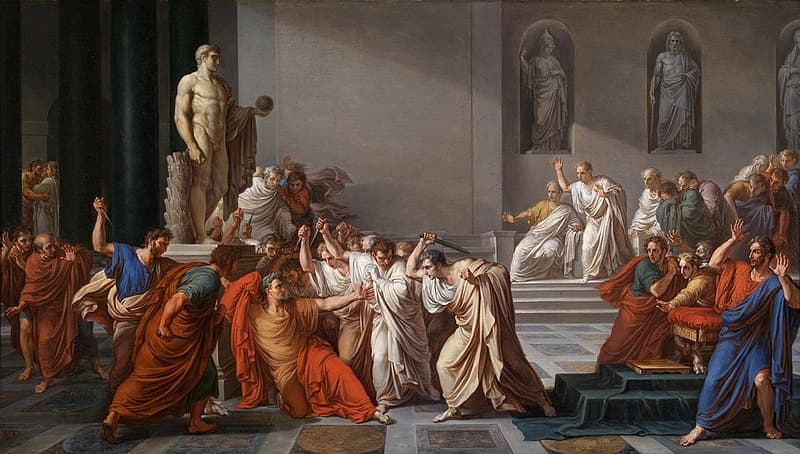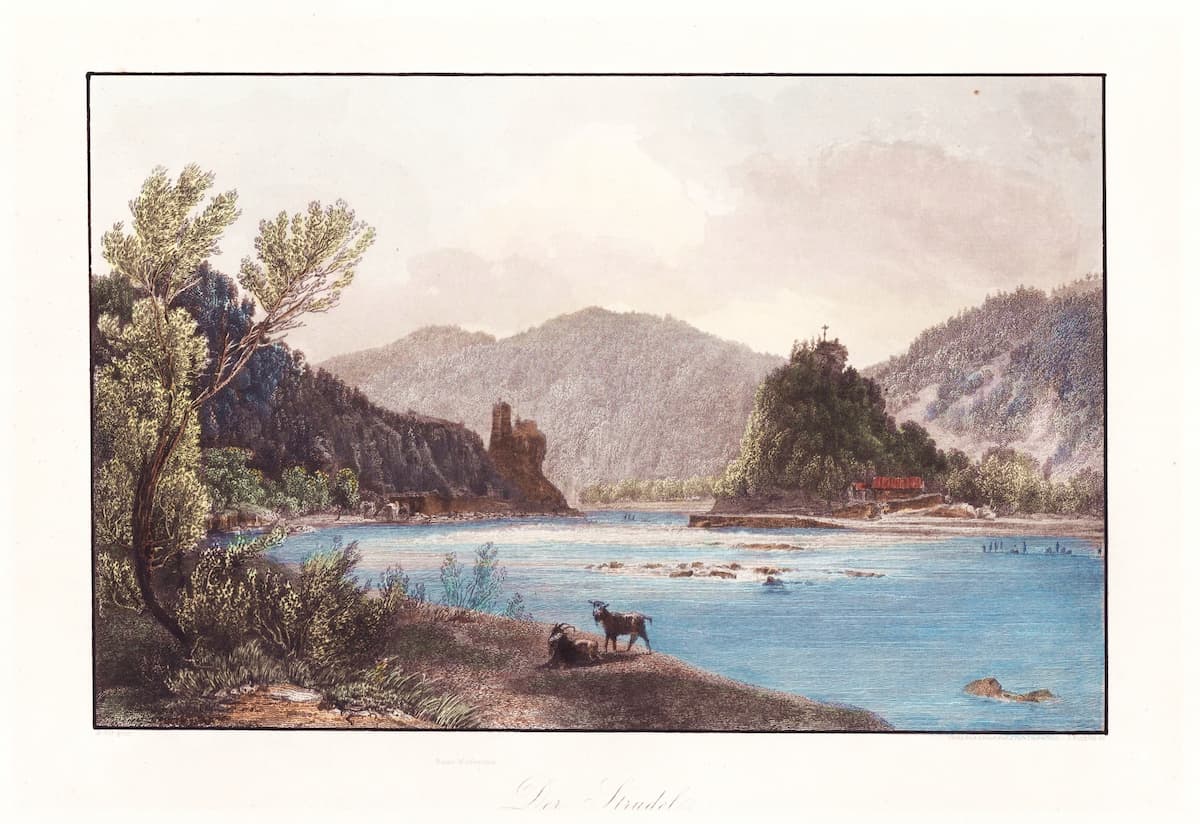I read that popular culture in the 1960s and 70 reveled in the “Age of Aquarius,” but in the 2020s we are clearly in the “Age of Superlatives.” Everybody seems bent on breaking records in every field of human endeavor. Hype, described as over-exaggeration, distortion and unnecessary amplification of information, is no longer a dirty word. And when it comes to music there is even an app called “UberHype.” It is a mobile version of “Hype Machine,” described as a “cultishly popular free Web service that aggregates links to the most buzzed-about songs that get posted across handpicked music blogs.” Much of present-day hype culture is based on an explosive flow of information, carried out within various networks, in which users express their own preferences or opinions. Much of that information gets sorted, shuffled, collated and analyzed by computer algorithms, and we have almost arrived at the title of this blog “Famous Classical Music Pieces.”
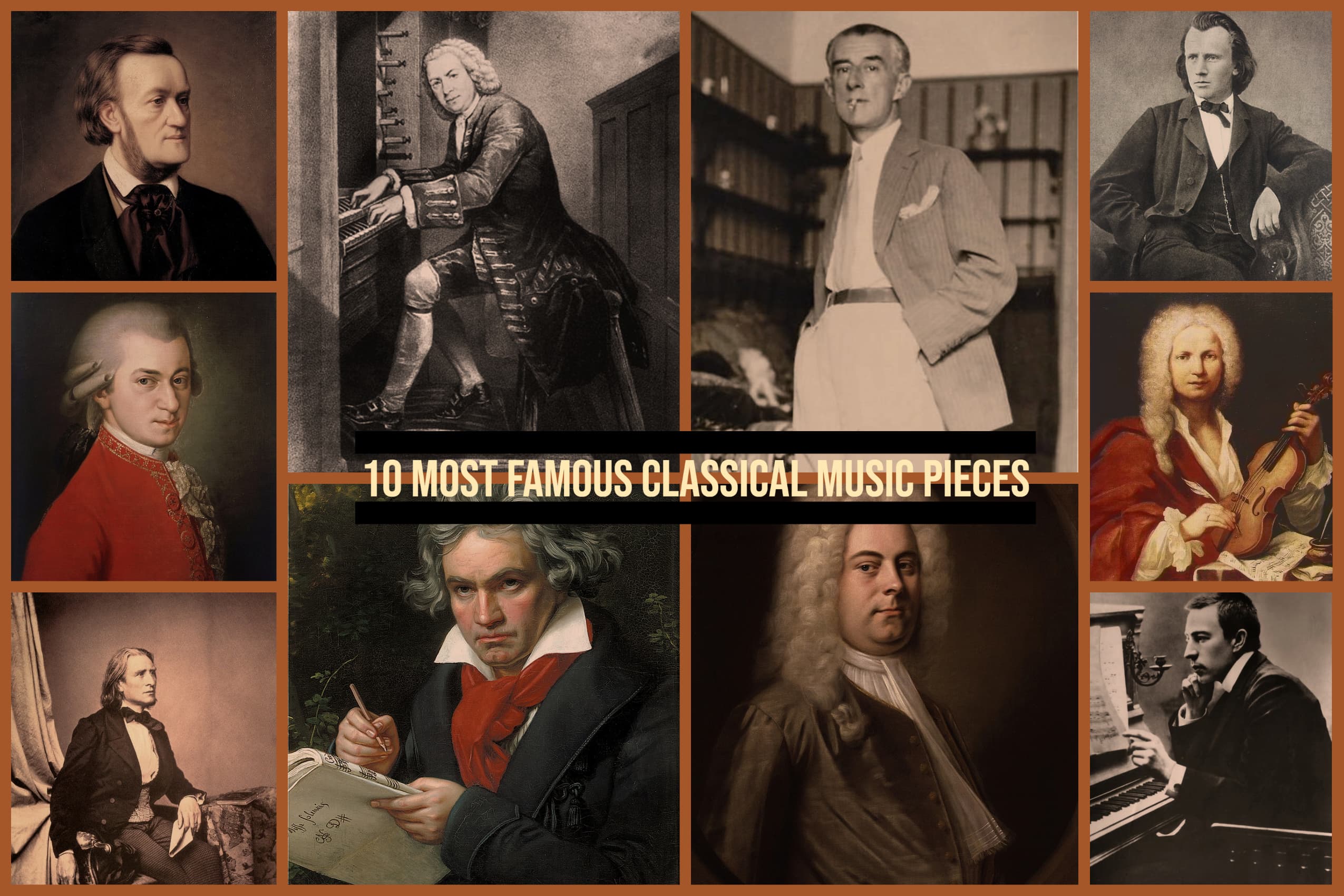
When it comes to famous classical music, however, we also still use basic bean counting methods. Dedicated sites measure the number of clicks, downloads and sales of digital bundles, CDs, vinyl and other formats across a given time period. But what makes pieces of classical music famous, regardless of stated musical preference, is “the emotional power to connect with the listener.” It has to be instantly recognizable, evocative and emotional, “complete with drama and tension as the music builds, which is then released ultimately in a wonderful resolving climax.” So let’s get started with the 10 most famous classical music pieces.
Ludwig van Beethoven: Symphony No. 5
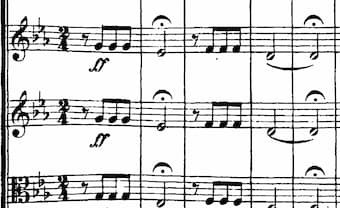
Beethoven’s 5th Symphony famous motif
When it comes to famous classical music pieces, the 5th symphony of Ludwig van Beethoven comes in at the top of the class. Everybody immediately can recognize that famous and incredible powerful “short-short-short-long” motive, and it is surely one of the most famous and commanding gestures in all of classical music. Introduced by the whole orchestra, the module is ambiguous in key and meter, but crystal clear in its rhythmic design. That famous opening is also connected with a biographical anecdote, which makes it even more memorable. Beethoven’s assistant Anton Schindler remembered the following story told to him by the composer. When Beethoven realized that his hearing loss was rapidly worsening, he penned an angry letter suggesting that he would “seize fate by the throat; it shall not bend or crush me completely.” The struggle with “fate knocking at the door,” according to Schindler, is musically encoded in the opening module. A contemporary author wrote upon hearing the first performance, “Radiant beams shoot through the deep night, and we become aware of gigantic shadows that close in on us and destroy everything within us except the pain of endless longing.” In classical music, it doesn’t get anymore famous than Beethoven’s 5th Symphony.
J. S. Bach: Toccata and Fugue in D minor

First page of Bach’s Toccata
The highly popular audio streaming and media service “Spotify” compiles a monthly list of the most popular and famous classical composers on their site. When I looked through these lists months after months, one name consistently tops the charts. It’s Johann Sebastian Bach, and unsurprisingly, his Toccata and Fugue in D minor is one of the most recognized and famous classical music pieces ever. Most of us have first listened to this incredibly famous music piece in the movie theater, as it has become a cliché to illustrate horror and villainy. Not everybody is happy with that particular association. A stern critic writes, “for a classically trained musician such a glaring reference to one of the most hackneyed commonplaces of Western art music—certainly the most hackneyed within Bach’s output—clashes with the intention of paying homage to the Eisenach maestro.” I read that there is some question as to whether Bach was actually the composer and when it was composed, but it is undoubtedly “the most famous organ work in existence.” And it is certainly one of the most powerful openings in all of classical music.
Wolfgang Amadeus Mozart: Eine kleine Nachtmusik
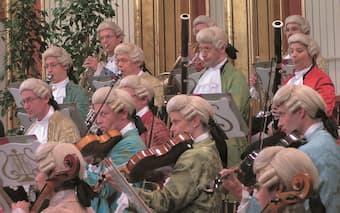
Vienna Mozart Orchestra
The most famous classical music pieces are instantly recognizable. Both Beethoven and Bach featured powerful rhythmic modules that immediately grip the listener. When it comes to Mozart, our focus shifts to elegant and singing melodies. As Mozart says, “melody is the essence of music.” Some of the central traits of Mozart’s music style are clarity, balance, and transparency. Nothing illustrates this point better than his “Eine kleine Nachtmusik.” This “Little Night Music” or possibly better translated as “Little Serenade,” is widely considered “the most popular of all Mozart’s works.” Nobody really knows why and for what occasion it was written, but it was completed in Vienna in 1787, around the time Mozart was working on his opera Don Giovanni. “Serenades” were usually written as background music for social gatherings. They weren’t meant to have a long dramatic musical narrative or feature deep emotional contrasts. On the contrary, they were composed for the enjoyment of listeners and players, and “provide uncomplicated and unadulterated listening pleasure.” When it comes to Mozart melodies, however, you should be very careful. There is a real chance that you will hum this tune all day and all night.
George Frideric Handel: Hallelujah Chorus
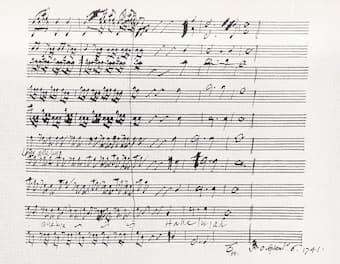
Handel: Hallelujah, 1741
One of the most frequently performed and most famous pieces of classical music in history is the Hallelujah Chorus from Handel’s oratorio Messiah. Handel was recognized as one of London’s leading opera composers. However, since all forms of staged musical theater were strictly forbidden during Lenten season, Handel turned his attention to morality plays, which later became known as oratorios. His Messiah first sounded in Dublin and a critic writes, “On Tuesday last Mr. Handel’s Sacred Grand Oratorio the Messiah, was performed… the best Judges allowed it to be the most finished piece of music. Words are wanting to express the exquisite delight it afforded to the admiring crowded audience. The Sublime, the Grand, and the Tender, adapted to the most elevated, majestic and moving words, conspired to transport and charm the ravished heart and ear.” It is said that King George II stood up during the Hallelujah Chorus, and when the king stands, everyone must stand as well. Even today, audiences will rise to their feet when the Hallelujah Chorus is sung. Over 270 years later, Handel’s incredible music still has the same effects upon listeners. The Hallelujah chorus, which closes Part II of the oratorio, has become famous as a stand-alone piece, and it is one of the most famous classical music pieces in the repertoire.
Franz Liszt: La Campanella
I am pretty sure that when you hear the first bell-like notes of our next famous classical music piece, you will instantly recognize it as “La Campanella” (The little bells) by Franz Liszt. We remember Liszt as the greatest piano virtuoso of his time; possibly the greatest of all time! His sensational technique and captivating concert personality turned him into the ultimate rock star of the 19th century. Clara Schumann was flabbergasted when she first heard Franz Liszt in concert in Vienna. “He can be compared to no other virtuoso,” she writes. “He is only one of his kind. He arouses fright and astonishment, though he is a very lovable artist. His attitude at the piano cannot be described, his passion knows no limits, and he has a great spirit.” Niccolò Paganini had an equally stellar reputation as he established a new brand of performing musician, the touring virtuoso. When Paganini visited Paris for a number of performances in 1831, Franz Liszt was in the audience. For Liszt, the performance provided the “blinding flash of insight.” With Paganini in mind, Liszt created a new kind of repertoire for the piano, which transferred some of the more spectacular Paganini feats to the keyboard. And that included a gigantic reworking of the “La campanella” melody Paganini had used in his B-minor Violin Concerto.
Antonio Vivaldi: Four Seasons (Spring)
Antonio Vivaldi wrote one of the most famous and immediately recognizable pieces of classical music, a series of concerts entitled “Four Seasons”. Vivaldi was active in Venice, at that time one of the most glamorous cities in Europe. Gondoliers and other ordinary people sang in the streets and canals. Wealthy families owned opera theaters and supported musicians. Saint Mark’s and other churches put on grand instrumental and vocal concerts on festival days. Vivaldi wrote over 500 Concertos with colorful titles, but in the Seasons he took “descriptive writing several steps farther by graphically illustrating four sonnets celebrating the seasons.” For a substantial period of time, these four concertos were almost entirely forgotten, but they leapt to fame in the mid-20th century and have since became the most recorded classical pieces in the world, or so some people say. But it is undeniable that the Four Seasons belong into the category of the most famous classical music pieces.
Sergei Rachmaninoff: Piano Concerto No. 2
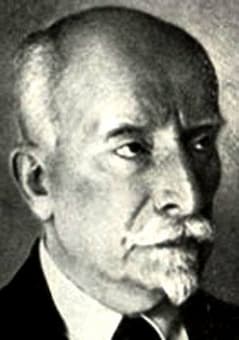
Nicolai Dahl
Talking about concertos, Rachmaninoff’s 2nd Piano Concerto has long been a favorite of concert audiences and pianists. A critic writes, “The concerto is supremely melodious, so much so that several of its themes have been used for popular songs. And the concerto as a whole has served as the soundtrack to several motion pictures.” Beautiful melodies, incredible virtuoso passages and lush orchestral colors aside, this famous work of classical music is also connected with an interesting autobiographical episode in the composer’s life. Rachmaninoff was seriously depressed after critics slammed his initial compositions. In 1900, a friend and colleague persuaded him to visit a certain Nicolai Dahl, a doctor specializing in treatment by hypnosis. In his memoirs the composer wrote, “Day after day I heard the same hypnotic formula while I lay half asleep in Dahl’s armchair: ‘You will begin to write your concerto. You will work with great ease. The music will be excellent.’ Incredible as it may sound, this cure really helped me.” And there you have it; one of the most famous classical music pieces in the repertoire originated in a doctor’s office.
Johannes Brahms: Lullaby
Johannes Brahms composed his most famous, and immediately recognizable melody, for an old flame. He met her through his women’s chorus in Hamburg, and they engaged in a lively correspondence. As he writes in 1859, “Most revered, dear friend, I wish you had seen my delighted face when I found your letters. The first lovely handwriting was already familiar, I had indeed looked upon it that last evening in Hamburg, and how often, since then… I am in love with music, I think of nothing but, and I am composing love songs again! If it continues like this I may evaporate into a chord and float off into the air.” Brahms wasn’t only in love with music, but unwilling to commit, he withdrew from the relationship. Fast-forward to Vienna where Brahms was happy to discover that his old flame was happily married to a rich industrialist. On the occasion of the birth of her second son, Brahms wrote his famous lullaby. As we all know, the “Lullaby” became hugely popular around the world, with countless and varied arrangements appearing overnight. Brahms, characteristically, was rather unhappy that amateurs tinkered with his music and he gruffly reprimanded his publisher, “Why don’t you make an edition in a minor key for naughty or sick children? I am sure that would help you to shift more copies.”
Maurice Ravel: Bolero
It has been said that a performance of Ravel’s Bolero begins every 10 minutes somewhere in the world. Originally, it was part of a ballet production and first performed on 22 November 1928 at the Opéra Garnier in Paris. Ravel became the most stringent critic of his own work, and in July 1931 he explained, “It constitutes an experiment in a very special and limited direction, and should not be suspected of aiming at achieving anything different from, or anything more than, it actually does achieve. Before its first performance, I issued a warning to the effect that what I had written was a piece lasting seventeen minutes and consisting wholly of orchestral tissue without music—of one very long, gradual crescendo. There are no contrasts, and practically no invention except the plan and the manner of execution.” But clearly, the public immediately embraced the composition and it has become one of the most popular and recognizable pieces of classical music in the world.
Richard Wagner: Ride of the Valkyries
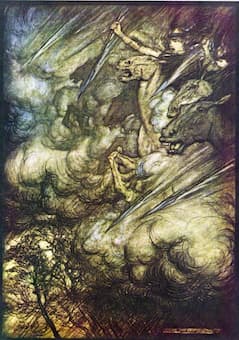
Ride of the Valkyries
I wish, I could write a blog featuring at least 100 famous classical music pieces, but for now, I will conclude with the famous Ride of the Valkyries by Richard Wagner. That powerful musical explosion is already anticipated in the prelude to Act 2 of the “Walküre” opera. It is a complicated tale involving gods, dwarfs, and humans. The Valkyries are a group of maidens who serve the god Wotan, and they are tasked to collect slain heroes on the battlefield in order to bring them to a worthy resting place. They fly through the air wearing helmets and shield, and have the power to cause death of the warriors they did not favour. In Wagner’s opera, the famous Ride of the Valkyries opens Act 3 with the Valkyries collecting heroes for Valhalla. I think most listeners will immediately recognize the brass theme sounded in unison as it cuts diagonally across a dense orchestra texture. Plenty of trills and woodwinds in dialogue, and of course swirling string arpeggios. Once the music is placed within the context of stage scenery, costumes, and opera singers, we immediately understand the emotional appeal and power of classical music.
For more of the best in classical music, sign up to our E-Newsletter

